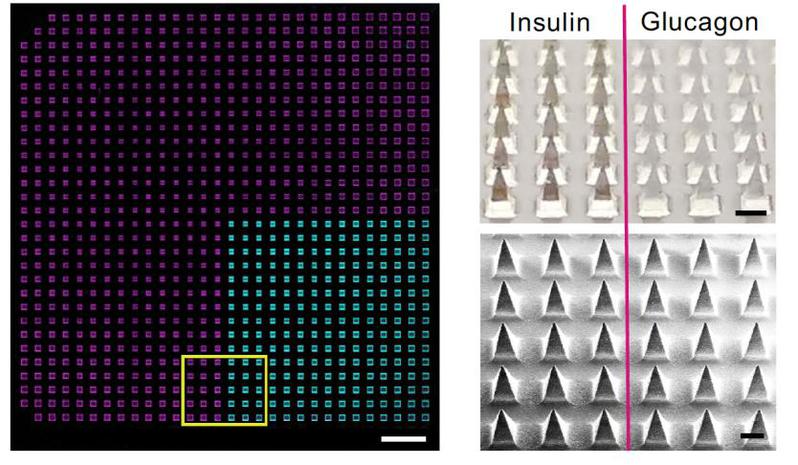A glucose-responsive patch for smart delivery of insulin and glucagon
Diabetes is an incurable chronic disease affecting the health of more than 400 million people worldwide. Therefore, providing tight glycemic control is essential for people with diabetes. The current efforts made in reversing insulin deficiency are counterbalanced by the frequent occurrence of acute hypoglycemia. Glucagon is an effective therapy for the rapid rescue of hypoglycemia, but its glucose-regulated release remains challenging.
An interdisciplinary team of researchers led by Prof. GU Zhen from Zhejiang University College of Pharmaceutical Sciences has developed a hybrid microneedle patch for glucose-responsive delivery of insulin and glucagon. Substituting the impaired α-cells and β-cells, the patch is designated to mitigate the underlying hypoglycemia risk during diabetes treatment. A related study has recently been published in the Proceedings of the National Academy of Sciences of the United States of America.

The coin-sized patch is constructed of dual modules that contain either insulin or glucagon, which are readily co-polymerized from the same monomers, but with different ratios, so that they are “dually-responsive” to both hyper- and hypoglycemic glucose ranges.
A mask-mediated sequential photo-polymerization preparation strategy facilitates the integration of the two modules into one microneedle-array patch. This method to selectively load two drugs into individual microneedles could facilitate the development of customized therapeutic patches for closed-loop delivery in a precise manner.
"We demonstrated with a type 1 diabetic mouse model, the hybrid patch effectively controls hyperglycemia while minimizing the occurrence of hypoglycemia in the setting of insulin therapy and simulated delayed meal or insulin overdose," said Dr. WANG Zejun, a postdoc fellow in the Gu lab and lead author of this study.

A fluorescence image of the smart patch (red: insulin module; blue: glucagon module)
"This hybrid patch offers a strategy to solve the issues associated with frequent adjustment of insulin dosage during treatment. We will further test and optimize performance of our patch on animal models next," said Prof. GU Zhen. Additionally, the compact and removable patch could help mitigate the post-treatment safety issues compared with dissolvable matrixes or implantable devices.